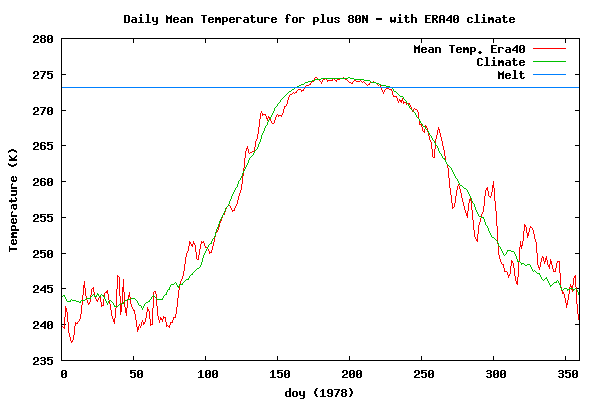[W]e’re going to try to make sure that as part of helping President Karzai stand up a broadly accepted, legitimate government, that corruption is reduced. [sic]
And we’ve made progress on some of those fronts. I mean, when it comes to corruption, I’ll just give you an example. Four years ago, 11 judges in the Afghan legal system were indicted for corruption. This year, 86 were indicted for corruption. We have seen Afghan-led efforts that have gone after police commanders, significant business people in Afghanistan. But we’re a long way from where we need to be on that.
And every time I talk to President Karzai I say that, as important as it is for us to help you train your military and your police forces, the only way that you are going to have a stable government over the long term is if the Afghan people feel that you're looking out for them. And that means making sure that the tradition of corruption in the government is reduced.The “Afghan-led efforts” Obama mentions, often involve two Afghan anti-corruption law enforcement units, the Sensitive Investigation Unit and the Major Crimes Task Force, which are trained and mentored by the United States and Britain.
And we’re going to keep on putting pressure on them on that front.
“All very well and good,” you might say? The Obama Administration is insisting the Afghan government do everything in its power to fight corruption?
But wait!
Just a few days later, on September 13, the Washington Post reported:
Senior Obama administration officials have concluded they need to step back from promoting American-style law enforcement as the main means of fighting corruption in Afghanistan because of the rift it has caused with President Hamid Karzai.In other words, Obama will back off from his recent remarks, and let Karzai and the Afghan government handle the corruption problem. Typically, as he has done since he entered office, Obama tells the American people one thing, then does just the opposite.
Well, that’s reasonable, isn’t it? After all, isn’t this an internal matter of a sovereign nation? Every government has some corruption. What’s the big deal?
According to data compiled by Transparency International, a bi-partisan organization which exposes corruption around the globe, in 2009, Afghanistan ranked as the second most corrupt nation on Earth, (it may not surprise you to learn that Somalia earned the Blue Ribbon and came in first).
Moreover, if the evidence is to be believed, President Hamid Karzai’s family, allies and the Afghan government seem to be at the very heart of Afghanistan’s corruption woes.
Woes which spread far outside the borders of that country and into the homes and lives of ordinary citizens of the United States, Europe, Asia and the Middle East.
According to a September 6 story in Britain’s Daily Telegraph, the Afghan Central Bank was forced to intervene to prevent the collapse of Kabul Bank, which had given, (in many cases, off-the-books), loans to shareholders, family and allies of President Hamid Karzai. These shady deals are said to amount to well over $100 million dollars.
The Telegraph article states:
[Kabul Bank Chairman] Farnood was ordered to hand over £100 million of apartments and villas in Dubai which he had purchased with the banks money for figures including Mahmoud Karzai, the president's brother.
Haseen Fahim, brother of [Afghanistan’s] vice president Mohammad Qasim Fahim, has borrowed tens of millions of pounds from the bank…But that's not all. By a long shot.
President Karzai’s half brother, Ahmed Wali Karzai, is reputed to be the wealthiest figure in Afghanistan’s drug-trafficking network and in league with the vicious “Los Zetas” Mexican drug cartel which has murdered hundreds of civilians and smuggles drugs into the United States, (including, presumably, some of Ahmed’s).
Mohammad Zia Salehi, one of Karzai's senior national security advisors, was arrested by a U.S. trained Afghan law enforcement unit on charges of giving and receiving bribes, but ordered released by President Karzai, (in an amusing, if ironic, side-note, one of the many charges against Salehi was for taking a bribe not to investigate bribery).
The Afghan Attorney General is threatening to re-arrest Salehi, in something of a standoff in which President Karzai has so far held the upper hand: Karzai has accused the anti-corruption units of “violating human rights principles.”
Human rights principles? The armed officers entered Salehi’s home in the middle of the night and arrested him. Oh! Well, stop the presses! Based on wiretaps and other evidence of graft, armed officers arrest the President’s buddy, after-hours. There’s a human rights violation, all right. I’m shocked. Flog them mercilessly.
There would seem to be plenty of evidence for corruption in these tales alone, but here’s one that should make you sit up and gasp. According to a June 2010 Wall Street Journal article:
More than $3 billion in cash has been openly flown out of Kabul International Airport in the past three years, a sum so large that U.S. investigators believe top Afghan officials and their associates are sending billions of diverted U.S. aid and logistics dollars and drug money to financial safe havens abroad. [Emphasis mine]
Officials believe some of the cash, if not most, is siphoned from Western aid projects and U.S., European and NATO contracts to provide security, supplies and reconstruction work for coalition forces in Afghanistan. The North Atlantic Treaty Organization spent about $14 billion here last year alone. Profits reaped from the opium trade are also a part of the money flow, as is cash earned by the Taliban from drugs and extortion…It would seem Afghanistan’s “internal” corruption scandal reaches right into the pockets of American taxpayers, and those of any nation giving aid to the Afghans.
Karzai’s family and cronies are using your tax dollars, Dear Reader, to line their bank vaults and buy luxury villas. Some of them are, so the evidence would seem to suggest, getting rich by smuggling drugs across our borders through the hands of some of the most bloodthirsty thugs in Mexico.
American and NATO troops and Drug Enforcement officers have died trying to stem the tide of drugs flowing out of Afghanistan and into their countries, yet the drug problem there seems to be supported by—certainly involving—members of the regime itself. An obviously corrupt regime supported by the Obama Administration, with U.S. tax dollars.
Much of the evidence points at President Karzai, though nothing seems to point directly to him; his fingerprints don’t seem to be on the cookie jar—though how often did Al Capone do his own dirty work? Obviously, Karzai’s friends, family and members of his government are involved in the drug-trafficking and corruption, and one would have to be naïve, indeed, to suppose that Karzai himself is not reaping some benefits.
But! Afghan parliamentary elections take place on Saturday, September 18, so perhaps some of the corrupt politicians will be voted out of office, right?
Don’t hold your breath, folks. Looks like the election is rigged. Just like the last one.
Afghanistan’s 2009 elections, which saw Hamid Karzai elected to a second term as president, also saw widespread election fraud. Reporters for the BBC bought “restricted” and official voter identification cards on the open market. Reporters for Britain’s Guardian filmed the seizure, by election monitors, of reams of ballots pre-marked for Hamid Karzai. Voters had to dip a finger into a jar of indelible ink to mark them so they could not vote more than once. The “indelible” ink easily washed off.
Saturday’s election already shows signs of fraud, and according to the Christian Science Monitor, suspected war criminals will be on the ballot, the article implicating Karzai:
…President Karzai himself cut deals with warlords and men implicated in past crimes ahead of last year's presidential election because of the votes they could deliver. The choice of Mohammad Qasim Fahim as Karzai's vice presidential running mate was emblematic of this trend; Fahim has long been implicated in possible war crimes from the 1990s and is widely perceived by many Afghans to be connected to criminal gangs.And Karzai has the audacity to accuse the police of human rights violations?
Considering all the evidence of election fraud, war criminals in office, graft, corruption, human rights violations, American taxpayer money used to buy luxury villas and expensive cars, why on Earth is Obama suddenly putting on the kid gloves and playing patty-cake with Karzai? How can the President of the United States consider, even for a moment, kow-towing to the whims of this two-bit gangster?
Has Obama no dignity? No sense of justice? No basic understanding of the concept of Right-and-Wrong?
Does Obama not have what it takes—as he has shown so often since he assumed the Office of the Presidency—to be the leader of the American people?
It would seem not.
Technorati Tags: Obama,Karzai,Afghanistan,corruption,tax dollars,election,fraud,bribes,bribery,graft,war criminal,human rights












